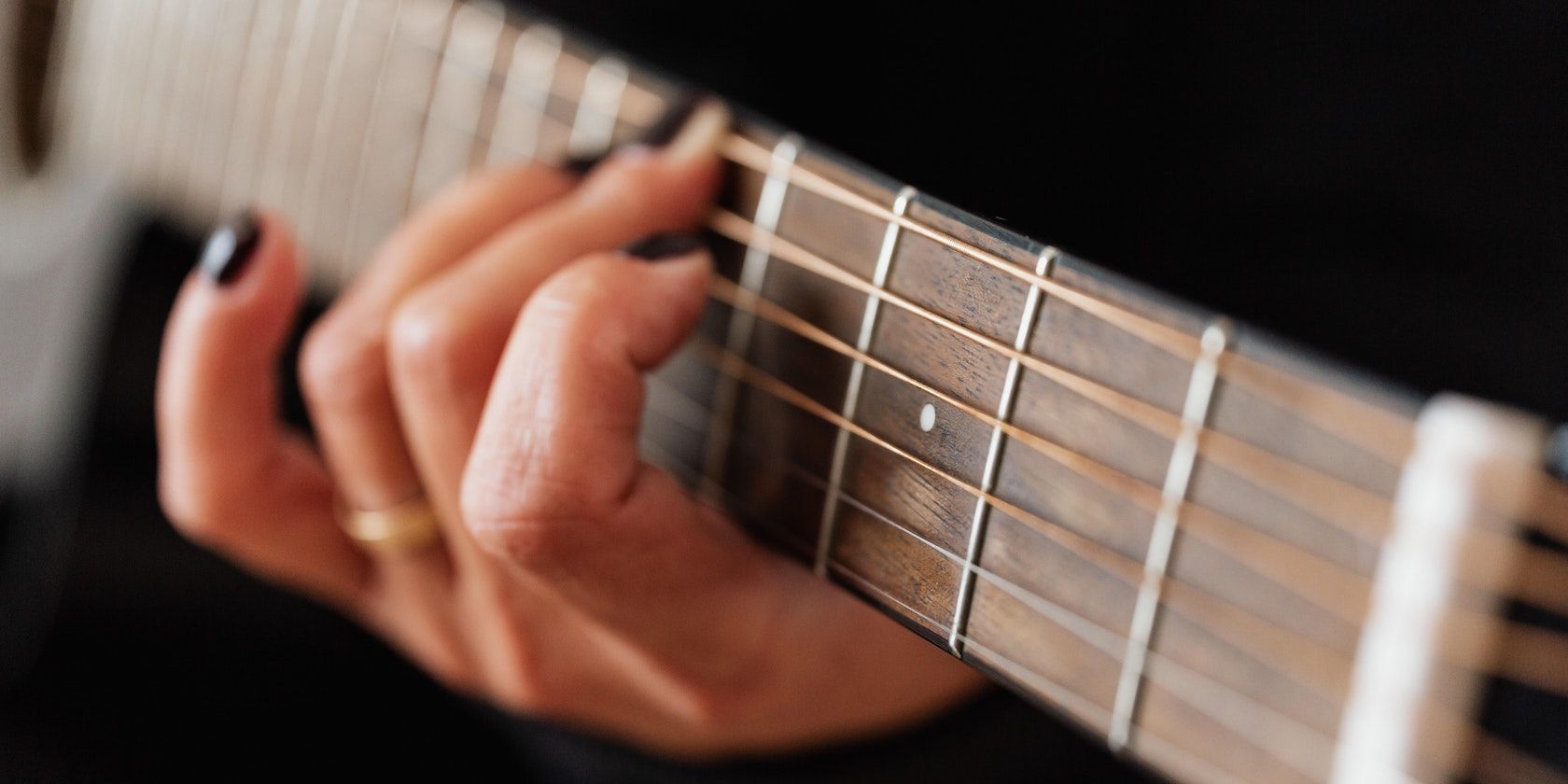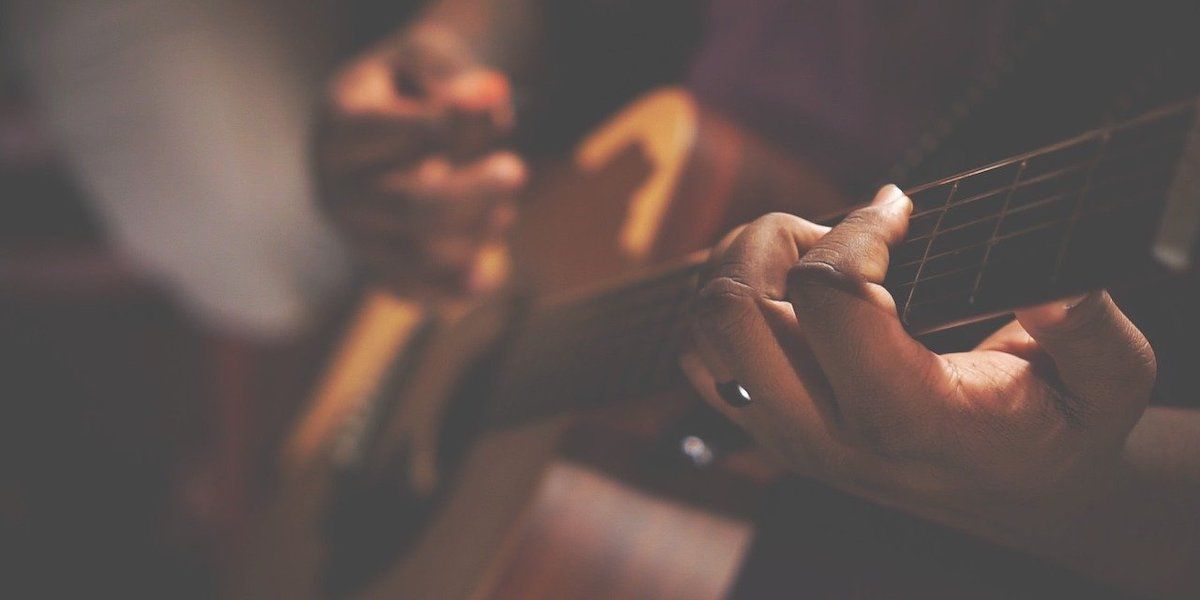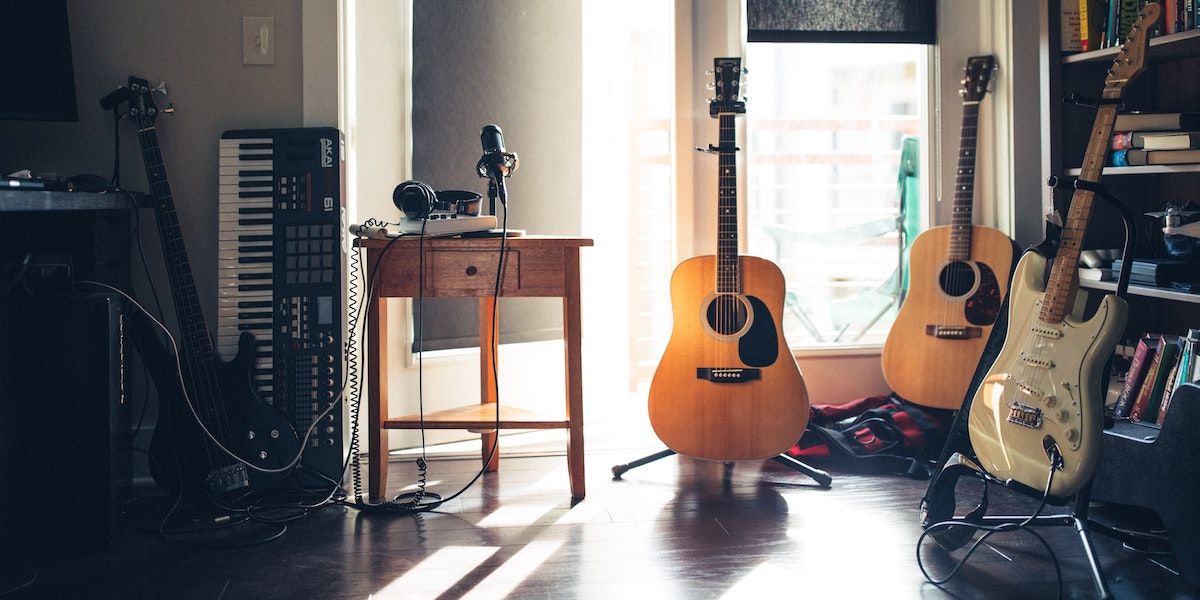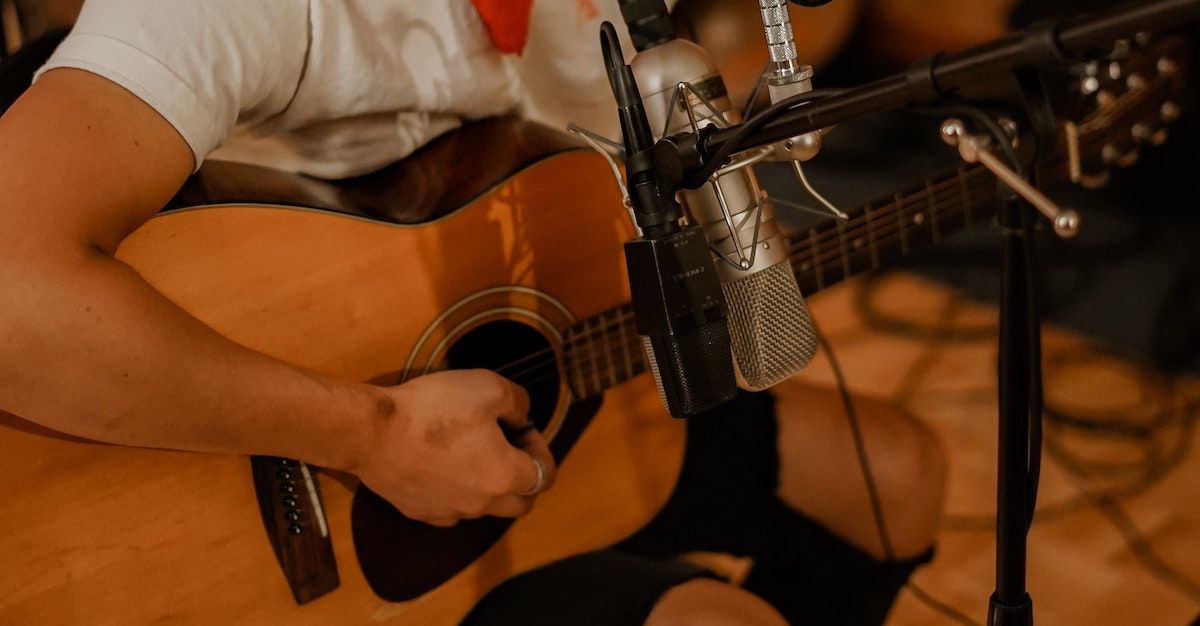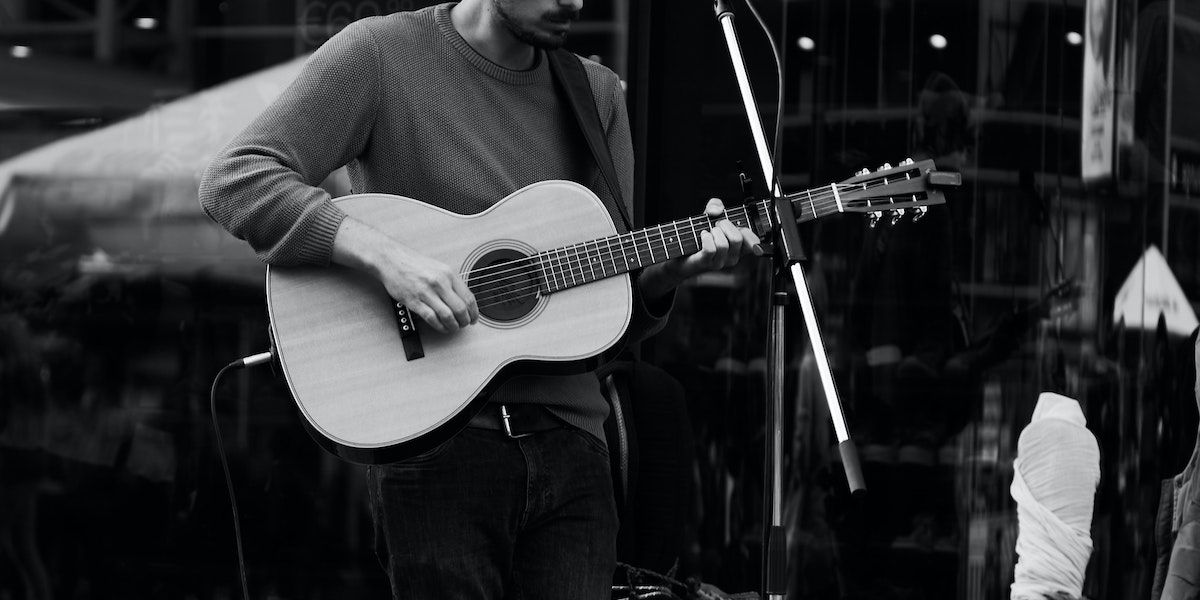Recording your acoustic or electro-acoustic guitar sounds simple enough, but without knowing the best methods of recording, you may be left with disappointing results.
As acoustic and electro-acoustic guitars essentially share the exact same qualities when played unplugged, most methods of recording will work on both types of guitars—but not all of them.
With that in mind, let's look at the best ways of recording your guitar, whether it's fully acoustic or electro-acoustic.
The Main Ways of Recording Your Guitar
There are three main ways you can record your guitar, with each way favoring a different type of sound and scenario. These are:
- Single-microphone recording
- Stereo recording
- Recording via a direct input (electro-acoustic guitar only)
Though the actual recording process is similar between these methods (i.e. you play the guitar), the setup is going to be different and will produce different sounds. Depending on what type of guitar you have and what sound you want to go for, you'll likely find one of these methods perfect to record with.
A Note on Microphones
With regard to what kind of microphones you'll want to record your guitar with, this can vary from guitar to guitar as well as from person to person. As a starting point, you should consider whether you need a USB mic or an XLR mic.
If you're using an XLR mic, you'll mainly be choosing between a condenser mic or a dynamic mic, with ribbon mics offering a more nuanced option. Different types of microphones favor different sounds. We'll offer some advice, but suggest reading those articles and gathering some info about your ideal microphone(s). It's well worth your time.
Now, let's dive a little deeper into each method and how they work for acoustic and electro-acoustic guitars.
1. Single-Microphone Recording
As the title suggests, this is simply recording with one microphone. Let's look at the best way you can record your guitar with a single microphone.
Acoustic Guitar
First things first: you do not want your mic placement to be right in front of the sound-hole. This will drown out any nuance in your recording and give you an overly bassy, muddy sound. Do not do this.
Though ideal mic placement will vary, and it's worth experimenting with different mic positions, it's best to start by placing your microphone about six inches from the 12th fret. This should give you a balanced, EQ-friendly sound that reflects the quality of your acoustic guitar.
When recording an acoustic guitar using one microphone, you should look at using a condenser microphone, either with a large or small diaphragm, though it varies from person to person.
An example of a large-diaphragm condenser mic would be the Aston Origin and an outstanding small-diaphragm condenser mic would be the Shure SM81.
Electro-Acoustic Guitar
If you want to capture your electro-acoustic guitar's natural acoustic tone, then follow the exact same process you would do with a fully acoustic guitar.
If you're looking to capture your electro-acoustic's amplified sound, such as when using effects pedals, you should treat your amp as the sound source, making sure your microphone is in front of your amp instead of your guitar.
How close or far you place your microphone depends on how much of the "room" you want to capture. If you're recording in a large space, for example, there's going to be a lot of reverb which could add character to your sound or create a muddy recording, depending on what kind of project you're working on.
Some of the best microphones for this are dynamic mics such as the Shure SM57.
2. Stereo Recording
Stereo recording involves using two mics to record an instrument at the same time with independent left and right channels, creating a "stereo" effect.
You can manipulate the "stereo" effect by utilizing different mic positions/orientations due to the sound hitting each mic at slightly different times and at different frequencies.
Stereo recording your guitar is a great way to add more detail to your recording, giving it a sense of width that is more prominent than when recording with just one microphone. Stereo recording is perfect if you're looking to capture a solo guitar performance with as much detail and nuance as you can.
However, there are setbacks to stereo recording, namely getting the mic positions correct. Stereo recordings are also harder to edit than single-microphone recordings. Incorrect mic positions can cause phasing issues due to using two different mics at different distances, which can result in a poor sound mix when played through single (or mono) speakers.
For the techniques mentioned below, you should be stereo recording using two of the same type of microphone to minimize any phasing issues.
Acoustic Guitar
Two of the most common types of stereo recording techniques are A/B and X/Y stereo recordings, which are perfect for recording your acoustic guitar.
A/B stereo recording involves placing two microphones, ideally two small-diaphragm condenser mics, parallel to each other at different points on your guitar. For example, you could have one mic six inches from the 12th fret, and another mic focused solely on the neck of your guitar, or perhaps on the outside of your guitar's body, panning towards it.
You can pan these mics left and right, as well as try them raised and lowered to pick up different variations of your guitar's sound.
X/Y stereo recording involves placing two microphones, again ideally small body diaphragm condenser mics, at a 90 to a 130-degree angle, with the capsules lined up next to each other or one on top of the other. In this way, the mics should create a sort of "Λ" shape, with the capsules forming the corner.
Though stereo recording is usually done with two mics, there are single "stereo mics", such as the RØDE NT4 which is a single microphone designed for X/Y stereo recording. This is perfect if you're new to stereo recording and a dual-mic setup sounds a little intimidating.
Electro-Acoustic Guitar
As before, if you're looking to capture your electro-acoustic guitar's unplugged sound, you follow the same process as you would with a fully acoustic guitar.
However, if you're looking to stereo record your electro-acoustic guitar via an amplifier, you should use the techniques applied in the above section but on your guitar amp, just as with single-mic recording.
There is also another method of stereo recording your electro-acoustic guitar, which we'll go over below.
3. Recording via a Direct Input (Electro-Acoustic Guitar Only)
For electro-acoustic guitarists only, you can record your electro-acoustic guitar directly into your digital audio software (DAW) via your guitar's direct input (DI).
This is done by plugging in your electro-acoustic guitar using your standard 1/4-inch guitar cable to an audio interface, which you then connect to your computer.
Using your guitar's pickup, this method creates a very clean, accurate, and sterile recording. By itself, this can sound very unnatural as none of your guitar's ambiance and acoustic sound is going to be recognized. Against a microphone recording of another instrument, such as vocals, this will sound very out of place if left unedited.
Unless you've got a good pickup, the recording isn't going to sound like how your guitar would when unplugged. However, you can create a unique type of stereo recording with your electro-acoustic guitar by recording with both a microphone and a DI at the same time.
By combining the ambiance and natural character that comes from microphone recording, with the high accuracy that comes from the DI recording, you can create a sound that combines the best of both worlds.
Record Often to Find What's Best for You
Now that you've got the basics of recording your acoustic or electro-acoustic guitar down, it's time to dive right in! The more you record, the more comfortable you'll get, positively impacting both how you record and how you play.
It's best to try out different mic positions and tweak them to see which complements your playing the best. It's also worth testing a range of songs and arrangements with each method to really improve your recording skills.

